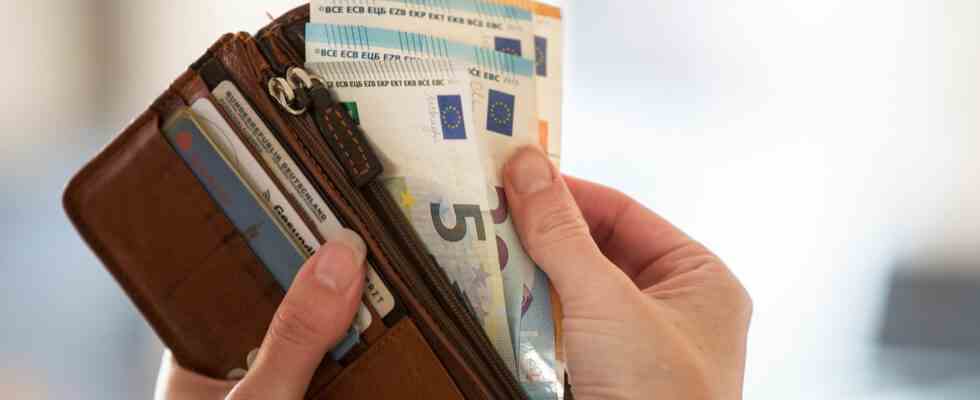As of: 01/23/2023 4:03 p.m
The number of bank branches and ATMs in Germany is steadily decreasing. According to the Bundesbank, the supply of cash is nevertheless secured. In addition, the use of alternative withdrawal locations is increasing – for example at the cash register.
Despite the dismantling of thousands of ATMs and the closure of bank branches in recent years, the Bundesbank believes that the supply of cash to people in Germany is currently secure.
According to the Bundesbank, the number of ATMs has fallen from around 59,000 in 2018 to a good 55,000 at present. In the same period, the number of bank branches fell from almost 30,000 to around 23,000, and compared to 2006 it was even halved.
Cash payments are still widespread in Germany. 30 percent of all payments are made with notes and coins.
A total of 79.8 million citizens and thus 96 percent of the population in Germany have a bank branch or an ATM in their own community. In a number of municipalities, however, people would have to leave their community to get to the nearest pick-up point.
Withdrawing money at the cash register is becoming more popular
On average, citizens travel 1.6 kilometers to the next pick-up point. For a large majority of the population (95.4 percent), the nearest place to withdraw money is even less than a kilometer away.
Traditional withdrawal locations such as ATMs and bank branches have lost some of their importance in recent years. Increased use is now also being made of offers for withdrawals at the cash register. From 2017 with two percent, usage has increased to eight percent in 2021.
In the long term, however, cash registers cannot replace ATMs and bank branches. Banks can and must verify the authenticity of coins and bills and are therefore an important part of cash control. From an economic point of view, however, issuing cash is less attractive for banks than other payment methods. Because the transport and storage of notes and coins is associated with costs.
Paying with your smartphone is becoming increasingly popular
Other payment methods are also increasingly in demand. According to the Bundesbank, smartphone payments will become more widespread in the coming years. In 2017, only two percent of those surveyed said they had ever used their smartphone to pay in a store. In 2021 it was already fifteen percent. Younger age groups in particular took advantage of the offer. Overall, however, it was still a long way behind in 2021: smartphones were only used for three percent of all purchases in retail.
The Bundesbank also emphasizes that citizens can only freely decide how they want to pay if cash is available. In addition, in crisis situations, it is “the only means of payment available at short notice.”

